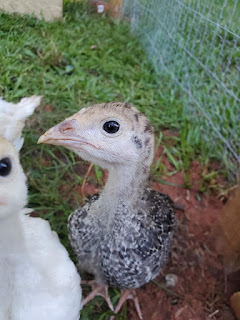I am not sure how many people have tried to germinate seeds from seed trays and then get irritated when they don't germinate the way you think that they should. I know I have and have been extremely aggravated in the past. Well like many other people, I have researched how to make my germination rate better.
Well who would have known that Jiffy gives you the best instructions on how to germinate seeds and it is right on the packaging too! I laughed at myself for not doing this before. So last week I decided that I needed to start germinating some tomato seeds, in fact I am trying to germinate 108 tomato plants. Well the first tray was a 36 seed tray that I have 12 Best Boy Tomatoes and 24 Brandywine Tomato seeds. As you can see in the picture below that I have a 100 percent germination rate on the 36 seed tray.
So here are the steps that I took to achieve this 100 percent germination rate.
1. For the 36 seed tray I took 5 cups of warm water and poured over the peat moss pellets.
Let the water soak in and expand which I gave it an hour. And if needed drain the excess water out of the tray.
2. Then I dropped 2 to 3 seeds in each pellet and then covered them.
3. After that I put the lid on the tray.
4. And then I stored the seed tray in an area where it would not receive direct sunlight.
For our seeds it takes 7 to 10 days for them to germinate. Always look at your seed package to see how long it takes for the seeds to germinate. We used Burpee Seeds for our tomato seeds. You can get the seeds at either
Amazon. You can get these seed trays at
Amazon.
I hope this helps you get the best germination rate possible and wish you happy gardening.
Our links above are from our Amazon Affiliate Program, please see the disclaimer below.
Disclaimer:
Amy Maria Watson Co. is a participant in the Amazon Services LLC Associates Program, an affiliate advertising program designed to provide means for sites to earn advertising fees/ commissions by advertising and linking to amazon.com.
As an Amazon Associate I earn a commission from qualifying purchases. My commission is earned when customers click the links and proceed to purchase item(s) or subscriptions.
I don't earn a commission based on "paid per clicks". Please note that purchasing items from the links provided on this website doesn't imply that you're getting a special discount, it just helps businesses like mine to earn a commission based on purchases promoted/ advertised on this website.





